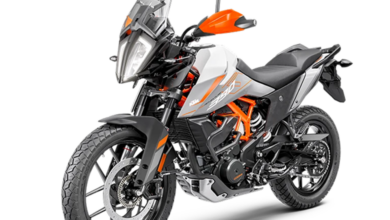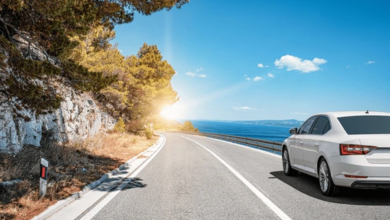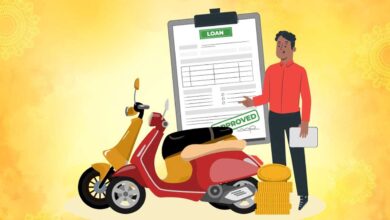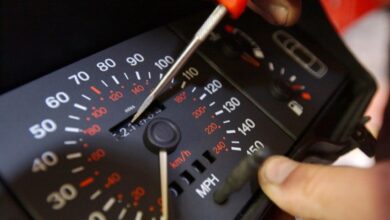Riding a bike is an exhilarating experience; for many, it’s a way of life. However, with the rising cost of bikes, it can be challenging to afford them without proper financial planning. Not everyone can pay in full upfront with cash. In such cases, taking out a bike loan can be a great way to finance your dream bike.
However, financing a motorcycle can be a significant hurdle for many. With the numerous financing options available, it’s easy to get confused and overwhelmed. This makes it difficult to decide which option is best. This article will dig into the nitty-gritty of taking out a bike loan versus paying in cash. Cash payment isn’t always feasible for everyone. So, buckle up, and let’s dive in!
Taking out a bike loan:
A bike loan is a personal loan specifically designed for buying a bike. It’s an excellent option for those who need help to afford to pay the total price of the bike upfront. Let’s have a closer look at the various advantages and disadvantages of taking out a bike loan:
See Also: Buying a Used Car in the UK is a Smart Choice for Everyone
Advantages of taking out a bike loan:
- No need for large upfront payment: With a bike loan, you can pay a small down payment and borrow the rest. This means that you can afford a higher-end bike. You can customize your motorcycle with accessories without worrying about making a large upfront payment.
- EMI options: Most bike loans offer flexible EMI options with different repayment tenures. It allows you to choose a repayment plan that fits your budget and financial goals.
- Credit building: Taking out a bike loan and making timely payments can improve your credit score. It also increases your chances of getting approved for future loans.
- Possible tax benefits: Sometimes, the interest paid on bike loans may be tax-deductible. This can help reduce your tax liability and save you money in the long run.
Disadvantages of taking out a bike loan:
- Interest rates: With Bike loans, you pay interest on top of the principal amount. This means you end up paying more for the bike in the long run.
- More extended repayment period: The longer repayment period may seem like an advantage. It also means that you pay more in interest over time.
- Risk of default: Failure to repay the loan on time can decrease your credit score, and you may face some consequences.
- Hidden charges: Some lenders may charge additional fees, such as processing fees, prepayment charges, or late payment fees. This can increase the overall cost of the loan.
- Risk of negative equity: If the bike’s resale value drops significantly, you may owe more on the loan than the bike is worth. This is known as negative equity and can be a significant financial burden.
Paying in cash:
Paying for your bike in cash means you don’t take out a loan and pay for the bike upfront. This option has its own set of advantages and disadvantages. Let’s take a look at them:
Advantages of paying in cash:
- No interest: When you pay in cash, you don’t have to pay any interest on the bike loan. This means you end up paying less for the bike in the long run.
- No repayment period: When you pay in cash, you don’t have to worry about a repayment period. This can be an advantage as it helps you save money in the long run.
- No risk of default: When you pay in cash, there is no risk of defaulting on the loan. This means that you don’t have to worry about any legal action being taken against you.
- Complete ownership: When you pay in cash, you own the bike outright. It means you can modify it as per your preferences and sell it whenever you want.
- More bargaining power: When you pay in cash, you have more bargaining power while negotiating the price with the seller or dealer. This can help you get a better deal on the bike.
Disadvantages of paying in cash:
- Requires upfront payment: Paying in cash means you must make the full payment upfront. This can be difficult for some people who need the required funds for other purposes.
- Limited options: When you pay in cash, you have limited options. This means you may need help to afford the bike you want.
- Lower credit score: When you pay in cash, it doesn’t help improve your credit score. This means that you may need help in getting loans in the future.
- Opportunity cost: By paying in cash, you may miss investment opportunities that could earn higher returns.
Two-wheeler Loan interest rate:
Two-wheeler Loan interest rates can vary depending on the lender and the loan amount. Generally, the Two-Wheeler loan interest rate ranges from 10% to 24% per annum. In addition, the interest rate can be fixed or floating and vary depending on the borrower’s credit score.
It is important to do research and compare interest rates from different lenders before applying for a two-wheeler loan. Borrowers with a high credit score may be able to secure a lower interest rate. Additionally, the loan amount, repayment tenure, and type of two-wheeler may also affect the interest rate offered.
Conclusion:
When deciding to take out a bike loan or not, the decision ultimately comes down to your financial situation and preferences. It is better to have the funds for the bike to pay in cash, as you will save on interest. However, a bike loan is a good option if you cannot pay the total amount upfront.
If you take out a bike loan, shopping around and comparing interest rates from different lenders is advisable. This will help you find the best loan for your needs and ensure you only pay what is necessary.
Ultimately, whether you choose to take out a bike loan or pay in cash, make sure you can afford the payment(s). You should also carefully understand the terms and conditions of the loan. With careful planning and consideration, you can make the right choice. Enjoy your new bike without any financial stress.









